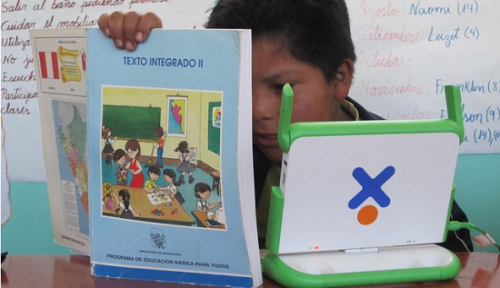The views expressed in this re-post from
Educational Technology Debate
are not necessarily those of
Laptops to Lesotho Inc.
____________________________
Educational Technology Debate
are not necessarily those of
Laptops to Lesotho Inc.
____________________________

Is the One Laptop Per Child Model Still Relevant in 2014?

A decade ago, Nicholas Negroponte burst into the imagination of educators and technologies worldwide with a brilliant vision of every child in the developing world using a laptop to learn learning. At the time, this was a revolutionary idea, and it brought forth a seemingly endless stream of commentary, hype, and announcements of countries planning massive one computer per child programs.
Since then, the bright idea has run into the realities of technology change, inertia, and innovation, and while the One Laptop Per Child organization continues, no longer are there major announcements of deployments or even a groundswell of excitement around it. Which begs the question: Is the One Laptop Per Child model still relevant?
OLPC vs. 1:1
Now I think we can all agree that there are two models at play here. There is the concept of one laptop per student and the concept of one device per student, regardless of its form factor. While the primacy of the laptop versus the tablet or mobile phone can be debated (and should be), the reality is that we have entered the era where one educational ICT tool per student is an accepted practice.
That doesn’t mean that 1:1 saturation of devices is proven, or is actually the best practice to pursue, but that’s certainly the route that many politicians and parents want. And that brings us to what I think is the larger question: should we be aiming for 1:1?
1:1 vs. 1:Many
In our headlong rush to try and provide computing devices for every student, and with Nicholas Negroponte asking if we would suppose that children share pencils, I wonder just why we believe we need to have a 1:1 ratio of technology tools per student. To Negroponte’s point, yes, there are many schools where children must share pencils, or pencil supply is by parental purchase only, resigning some students to share pencils as a normal course of their school day.
If we are still working to support educational systems to provide the basics, like even teachers or pencils, might we also dial back our expectations of ICT investments? What exactly is wrong with using low-cost projectors so an entire class can learn from one computer?
Teacher vs. Student ICT
Or what about starting with ICT infrastructure for teacher professional development and school administration? In fact, isn’t the low-hanging fruit of ICT4E getting teachers to post grades, get support, and even simply report on attendance levels through mobile phones a great advancement in many countries? Just paying teachers regularly and on time via mobile money would arguably increase learning outcomes as much as laptop deployments.
School level educational management systems, reporting real-time data up to national administrators and out to classroom teachers, would revolutionize education and reveal the great flaws in current practices faster and more transparently that student-centered technology.
Not as flashy or exciting, for sure, but I argue, much, much more effective than one anything per child.
But enough of my rambling, what is your opinion? Do share your thoughts in comments or email us a Guest Post answering questions like these:
- Is the OLPC model still valid?
- Do schools still need one laptop per student?
- Or is computing hardware now totally ubiquitous?
- Is it time to again focus on curriculum, content, and pedagogy?
- And can we finally remember the teachers?
4228 4th Street NW
Washington, DC 20011